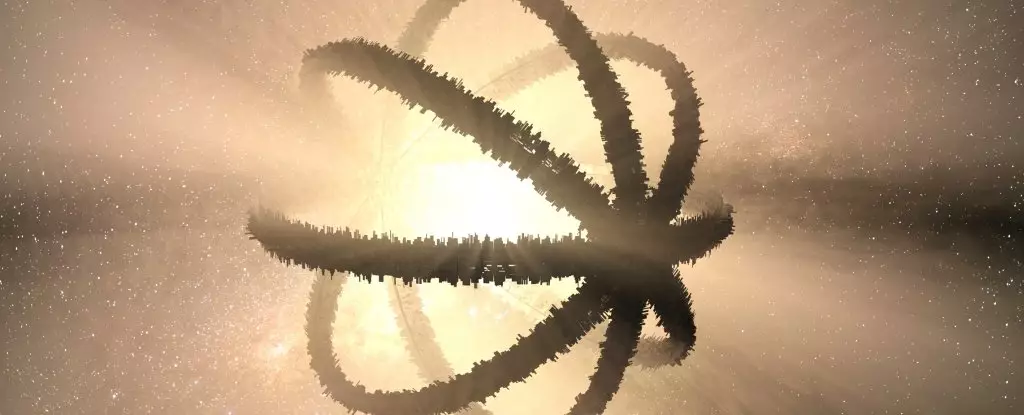In the search for extraterrestrial intelligence, the concept of Dyson Spheres has captured the imagination of scientists and sci-fi enthusiasts alike. Recently, the discovery of seven stars exhibiting characteristics of potential Dyson Spheres has reignited excitement in the scientific community. However, a new paper has emerged, suggesting a more mundane explanation for these phenomena – dust obscured galaxies.
When searching for signs of advanced civilizations in the universe, one promising strategy is to look for evidence of large-scale projects in space. The Dyson Sphere concept, first introduced by Freeman Dyson in 1960, posits the existence of megastructures constructed around stars to harness their energy. These spheres would emit excess infrared radiation, serving as a potential signature of alien activity.
Project Hephaistos has identified seven M type stars out of 5 million surveyed by the Gaia astrometric satellite as potential Dyson Sphere candidates. By analyzing data from 2MASS and WISE, researchers found that these stars exhibited the expected infrared excess indicative of Dyson Spheres. However, a closer investigation by lead author Tongtian Ren and team unveiled a different explanation for these phenomena.
Through cross-matching data from VLASS and other radio surveys, the research team discovered radio sources near three of the candidate stars – A, B, and G. These sources, particularly candidate G, were found to be associated with distant galaxies obscured by dust. The presence of dust clouds contaminated the infrared energy distribution, leading to misconceptions of Dyson Sphere activity. Furthermore, candidate B was identified as a distant galaxy in close proximity to an M type dwarf star, further refuting the Dyson Sphere theory.
The unique spectra of these candidates, particularly candidate G with its radio loud active galactic nuclei and superluminal jets, suggest that they are distant quasars emitting vast amounts of radiation. The hot dust clouds surrounding these galaxies obscure most of this radiation, allowing only the infrared wavelengths to be detected. While this explanation may not be as exciting as Dyson Spheres, it provides a more plausible interpretation of the observed phenomena.
Out of the seven candidate stars, radio sources have not been identified for the remaining four. This does not definitively rule out the possibility of Dyson Spheres, but it does highlight the need for further high-resolution radio surveys. The absence of conclusive evidence for these candidates leaves the door open for continued speculation about the existence of alien megastructures in distant star systems.
While the idea of Dyson Spheres remains a compelling prospect in the search for extraterrestrial intelligence, the recent findings suggest a more down-to-earth explanation for the observed phenomena. Dust obscured galaxies and distant quasars provide a plausible account for the excess infrared radiation detected around these stars, challenging the notion of advanced alien civilizations harnessing the power of their suns. As scientists continue to explore the mysteries of the cosmos, the quest for alien intelligence remains a fascinating and ever-evolving journey.



Leave a Reply